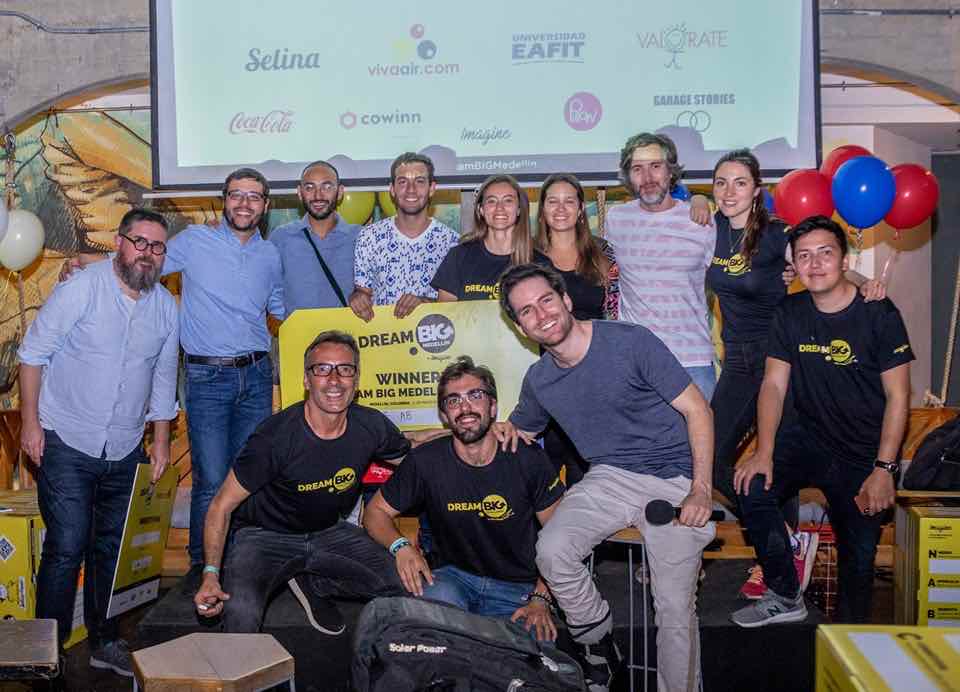
The government is hoping the so-called orange economy, or creative industries – the country’s film, art, music and gaming industries – can help to diversify the economy away from oil.
The throngs of people attending FILBo, Bogotá’s annual book festival, this year show there’s a great potential market for creative industries in the country. What has generally been dubbed in Colombia as the “orange economy” currently accounts for 3.3% of the country’s GDP – a figure the government hopes to increase.
The idea of a creative economy was first described in 2001 by British author John Howkins, as an economic model driven by the cultural and technological sectors that create, produce and commercialise content based on intellectual property. Soon after, this concept was adopted by the Colombian government to capitalise on the country’s large talent pool in fields such as publishing, music production, cinema, television, news, theatre, video games, software, animation, architecture, design and fashion, among others.
Before the term was even coined, the Chamber of Commerce of Bogotá was working to strengthen these creative sectors. Events like FILBo are part of a mission to transform the Colombian capital into a ‘creative city,’ along with large annual festivals such as the city’s art fair ARTBO, the Bogotá Audiovisual Market, the Bogotá Music Market and Bogotá Fashion Week. In addition, the Chamber of Commerce will launch Bogotá Madrid Fusion this year to promote the country’s gastronomy.
Bogotá’s ongoing effort to promote the capital as a haven for creative industries is paying off. According to the Chamber of Commerce, 92% of the country’s creative services were produced in the capital. 23.3% of Colombia’s creative businesses are based in Bogotá.
A key proposal of President Iván Duque’s platform has been the strengthening of the creative economy, an idea he and his economic advisor Felipe Buitrago first developed in their 2013 book, The Orange Economy: An Infinite Opportunity. His goal is to make the creative economy 6% of the country’s GDP by 2022.

To reach that goal the government passed the Orange Law — Law 1834 of 2017. The law states that creative businesses will have easier access to lines of credit through the Financial Institution for Development, FINDETER, and that the financial institution Bancóldex will create financial mechanisms to fund creative businesses and increase access to seed capital.
Additionally, the government will create digital and cultural infrastructure to increase the number of cultural spaces such as museums, libraries, cultural centres and theatres.
Related: Business set to be on trend at bogota fashion week
Another law that was recently passed, the 2018 Finance Bill (Ley de Financiamiento), exempts creative businesses from paying the 33% income tax (which will decrease 1% every year until 2022).
These laws build on previous legislation that was passed to strengthen the creative economy. This includes the film laws of 2003 and 2012 which increased movie ticket sales and incentivised international on-site filming in Colombia, respectively; and the Public Entertainment Law of 2011, which encouraged international artists to perform in Colombia by removing the IVA tax on artistic services, and increased ticket sales by removing the tax on attendance tickets.
Laws such as these have had proven success. Moreover, following the 2012 Film Law, 22 audiovisual projects were produced in Colombia from 2013 to 2016, generating more than COP$89 billion.
To kick off the implementation of the Orange Law and to formalise the creative economy, Bancóldex sold COP$4 billion in orange bonds for creative industries during an historic auction in November 2018. The 322 investors attending this unprecedented auction bid more than enough pesos to cover the price of the bonds.
While many believe the Orange Law is a step in the right direction, there are many critics who wonder if it will truly benefit creatives and artists. Some worry that the National Orange Economy Council, comprised of different government agencies and financial institutions, does not include any unions, artists or writers. Others worry that financing creative industries by extending lines of credit will create a cycle of debt.
And it isn’t just the Orange Law that’s prone to criticism.
Members of the Association of Colombian Independent Film Producers worry that the 2018 Finance Bill will increase taxes on movie ticket sales, a portion of which funds the Film Finance Fund.
Even celebrities are weighing in: rock singer Juanes tweeted that the tax could make concert tickets more expensive, in turn possibly deterring people from attending.
These aren’t the only issues. For the Orange Law to work, Colombia needs to strengthen its intellectual property laws.
In 2014 Colombia was added to a US intellectual property watchlist, and in 2017 Colombia still failed to implement stronger intellectual property rights under the US-Colombia Free Trade Agreement, mostly concerning digitally reproduced and shared content.
Since then, Congress has passed Law 1915 that extends protections for authors’ and related rights, allowing the temporary digital replication of a copyrighted material only if there is no economic benefit.
Although a step in the right direction, without more data, it is difficult to gauge the efficiency of the Orange Law and other legislation that aims to develop and protect creative industries. Only time will tell if these laws are enough to push the creative economy forward.





